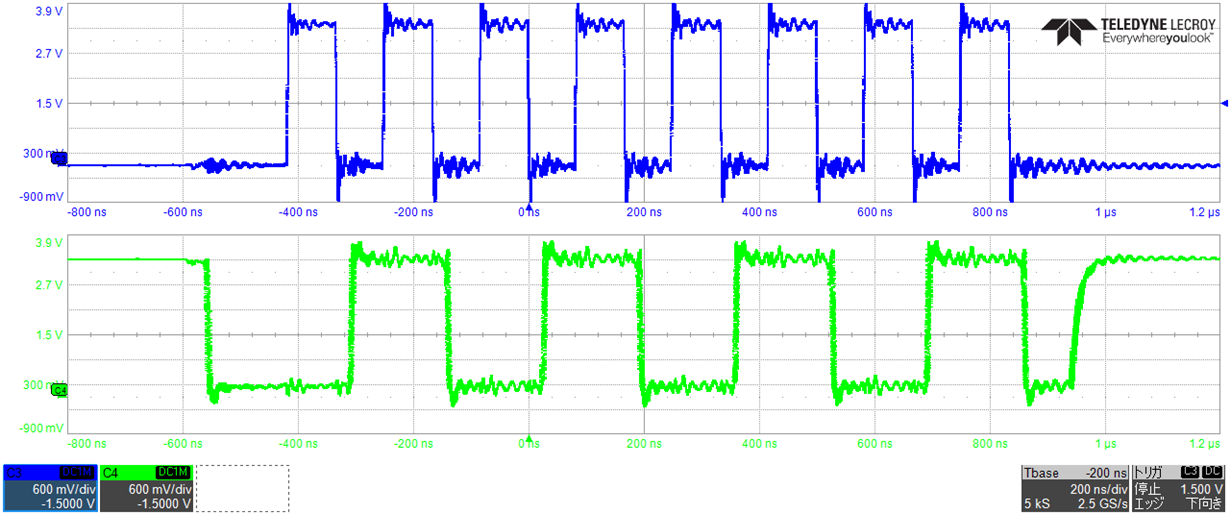Hi,
I have a question about timing in QSSI slave mode.
The data sheet specifies that the minimum timing of S11(TXDSOH) is 37.4ns, however it seems that S11 is output in about 22 to 33 ns in actual measurement.
TM4C1294 is used in Freescale SPI Frame Format with SPO=0 and SPH=0 at slave mode.
The measured waveform is attached below.
- TSYSCLK = 120Mhz
- SSI2Clk(4 pin): Blue
- SSI2TX(2 pin) : Green
- The SPI transfer rate is 6Mbps, and the slave outputs 0x55.
The figure below expands the third falling clock edge.
The figure below expands the fourth falling clock edge.
Although the measurement results are less than the data sheet specifications, are the data sheet specifications correct?
Best Regards,
H.U




